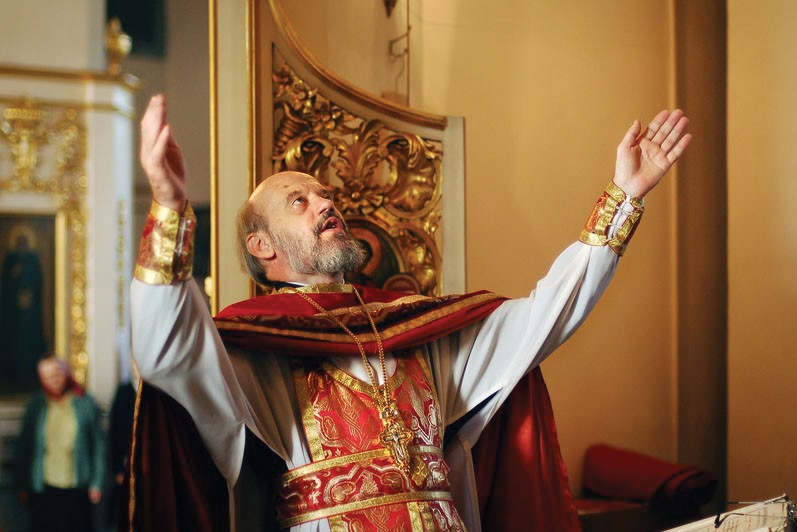
The Church of Christ consists of 15 Local Orthodox Churches. The Albanian Orthodox Church is one of them. What do we know about the history of Orthodoxy in Albania, a country that was the first to declare itself an atheist state and almost completely wiped out its Christian identity?
Situation in Albania. In the 20th century, Albania was one of the poorest countries in Europe, with a population living in difficult conditions while retaining amazing hospitality that is rarely found in wealthier countries. Poverty is especially visible outside the city, where life has changed little over the centuries. When the communists came to power, they established some order after the devastation of the war years. They attempted to revive the economy but began to destroy Christianity and the Orthodox culture of the populace. After the fall of the Hoxha regime, the country experienced a protracted crisis in all spheres of life. Poverty and despair gave rise to crime: the Albanian mafia is known for its atrocities throughout Western Europe and America. According to statistics, when the borders opened in the 1990s, almost a third of Albania’s total population (3.2 million people) left their homeland in search of work in a foreign country. Most of them have become illegal immigrants.

Church in Albania. Religious repression began immediately after the German occupation ended and the partisans took over. It is still not known for sure how many people died in the course of persecutions, executions, and exile to prison camps. There was almost nothing left of the 1600 Orthodox churches by 1990; those that weren’t destroyed were turned into restaurants, warehouses, and stores. Christians were forced to keep their faith secret. There is a story of a woman whose icons were confiscated by the police. When the police were leaving, she said: “You missed another icon.” They said, “Bring it to us.” She made the sign of the cross and replied, “Here it is. No one can take it away from me.” They would sentence anyone who made the sign of the cross in public to ten years, and anyone who had icons at home to twenty-five years.
Marika Siko was one of the amazing Christians of Albania during the Communist rule. She made her house available for the Eucharist, Baptism, and Matrimony for many years. Services were carried out in the dead of night in a remote room. There was a congregation at her home, headed by a hiding priest. The members of this congregation organized unceasing prayers lasting for forty days; everyone prayed for the persecution to end. The priest in hiding, Father Cosmas Kyrio, was very poor. “He had 7 children with whom he lived in a one-window mud house. When we were talking with him, we knew we were talking with an apostle. He was not well educated, but he read the Bible in the moonlight, and God enlightened him,” Marika recalled. “On Thursday, we made candles and baked bread for the Eucharist. Then on Friday Father Cosmas arrived, and we were able to receive Holy Communion on that night!” “I am a priest,” Father Cosmas said, “I will serve the Church, even if the Church has no places of worship.” He was employed as an industrial worker, like other priests.
According to Archbishop Anastasius, the head of the Albanian Church, the “culture of fear” that formed during the years of the communist regime is worse than poverty. The “culture of fear” is hard to heal and generates suspicion and mistrust even among neighbors. According to one old man, “if you don’t like fighting dragons like St. George, you must carefully conceal the slightest political dissent or religiosity.”

Albanian Resurrection. It was only in the early 1990s, after the death of the communist leader, that things began to change. Archbishop Anastasius arrived in the country and began to actively revive Orthodoxy on the Albanian soil. He was met by only twenty-two priests, who were old and weak, some of them almost on their deathbed: that was all that survived the persecution of the Albanian Church. Anastasius was Greek, so the government put all sorts of obstacles in his way, including slander. His life was in jeopardy more than once, especially during the 1997 civil war. In the early 2000s, His Eminence showed his guests a bullet stuck in a double window glass. A dove laid an egg in a flowerpot not far from the bullet in the same year. According to Archbishop Anastasius, “The bullet and the egg are excellent symbols of Albania at a crossroads.” His friends repeatedly urged him to leave the country, but the archbishop always refused. “I am the captain of the ship. Others may leave, but for me there is no other option than to stay.”
His Eminence has achieved much in the cause of revival of Christian life in the country both with his personal example and his pastoral attitude to all people. They say that one day a modest man approached the archbishop and said: “I am not baptized, I am a Muslim, but could you please give me your blessing?” Not only did the archbishop bless the man, but he also said that the man was a bearer of the image of God.
When it comes to the Albanian Church, the word “Resurrection” usually comes to mind. “The Resurrection is not after the Cross, but on the Cross”, Archbishop Anastasius reiterates. Many of the restored churches, a seminary, and a church newspaper are named after the Resurrection of Christ. All this has become possible due to the way of the Cross, which had been traversed by hundreds of thousands of Christians in Albania.



